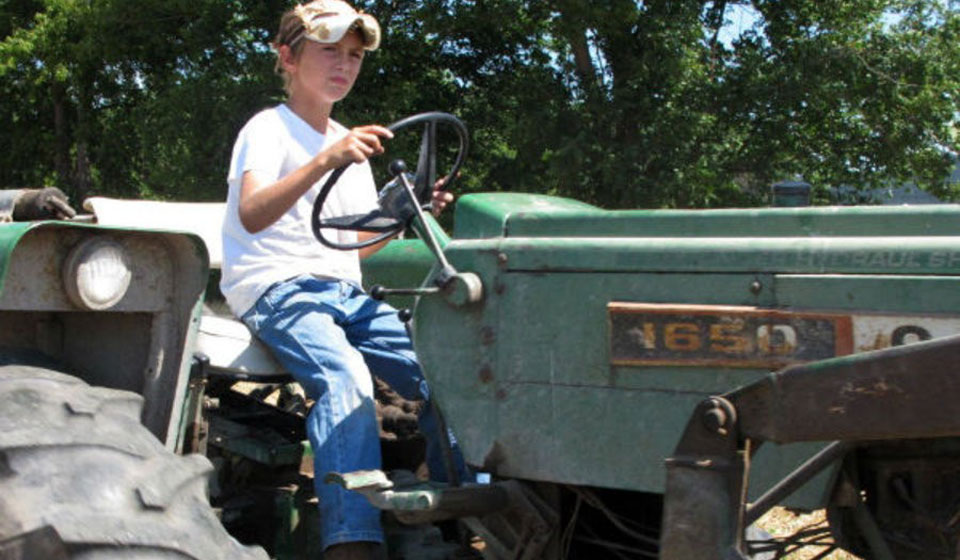
This article won a first place award in the Best Editorial or Column category at the 2020 Labor Media Awards, presented by the International Labor Communications Association.
2016: Forty-eight hours after Donald J. Trump was elected President of the United States, this reporter was out in the dusty, brown flatlands of rural Missouri.
While large news outlets focused their attention on the rise of Trump’s “silent voters,” and where Clinton went wrong, I wanted to find out why voters took the risk of backing Trump. I wanted to get the “worm’s eye view,” as the late human-interest columnist and war correspondent Ernie Pyle would say.
It was a calculated gamble for rural voters supporting Trump, his bravado, and “run the country like a business” attitude. Many were willing to burn the whole system down—and accomplished it somewhat—instead of facing another four years of the status quo. What a false hope that was.
The echoes of the past have not been kind to America’s rural families and farmers.
And this is where we dig in.
Somewhere in America’s farmland—“Farmers were [Trump’s] base,” said John Wesley Boyd Jr., Virginian soybean farmer, in a recent CNN interview. “They helped elect this President…and now he’s turning his back on America’s farmers when we need him the most.”
Last year’s grain and soybean crop remain housed in tall, brooding silos. This year’s crop seedlings lay unplanted.
And across the Midwest, and down through the South, combine harvesters, tractor engines, plows, threshers, and reapers sit idle.
One could easily point to the wet weather and flooding taking place in farmland (our climate crisis) as viable reasons for a slow start to harvesting and crop sales. But as summer appears, and temperatures rise, all eyes are firmly planted on the White House, China, and the escalating tensions around the U.S./China trade negotiations table as the aptly named “trade war” rages on.
“We’re praying that the president will be successful in these negotiations,” said Arkansas Gov. Asa Hutchinson recently.
Ah…if only hopes and payers could’ve prevented this disaster…but, it didn’t, like all others.
And all blame is perched upon politicians’ laps.
How did we get here?
Was our current trade war expected? For the most part, yes.
Trump complained about China’s policy since day one of his presidential campaign. “China’s upset because of the way Donald Trump is talking about trade with China. They’re ripping us off, folks, it’s time. I’m so happy they’re upset,” said then-candidate Trump during a 2016 campaign rally in Staten Island, N.Y.
Shortly after beginning his White House occupation, the new administration launched an investigation into Chinese trade policies and imposed tariffs on billions of dollars’ worth of Chinese goods in 2017.
Months of hostile tensions led to a halt in imposing new tariffs by the U.S. and China, and led leaders to attempt a civil resolution—talks failed, and tariffs grew.
To date, the U.S. has applied tariffs to Chinese goods to the tune of $250 billion. China responded by applying $110 billion worth of tariffs on U.S. goods.
China also announced it will increase tariffs on $60 billion worth of U.S. goods starting June 1.
“China’s tariff move is in response to the U.S. unilateralism and trade protectionism,” China’s Ministry of Finance said in a statement Monday, May 13. “China hopes that the U.S. will return to the right track of bilateral trade talks, work together with China and meet each other halfway, to reach a win-win and mutually beneficial agreement on the basis of mutual respect.”
Products affected include beef, lamb, pork, vegetables, juice, cooking oil, tea, coffee, refrigerators, and furniture, among many others.
Trump, as expected, continues to double-down on his tariff-justifying rhetoric.
“The oversimplified explanation that Trump gives, which sounds appealing on the surface, is that the country will be making money in the short run from Chinese tariff payments and will have more jobs in the long run when China finally cracks. But the reality is, that just isn’t how capitalism works and it’s not how this trade war is shaking out,” wrote C.J. Atkins, People’s World managing editor, in earlier coverage.
And he’s right.
The trade war is not shaking out for a vulnerable, old-school conservative part of the working class: Farmers.
Wherever possible they split the ballot ticket blue and red; left for local, and right for national. Missouri’s successful fight against so-called “right-to-work” is a fine example of how, today, issues drive voters, not party loyalty.
But let’s also not forget another piece of this economic equation, Cuba.
With the Trump regime hell-bent on installing another American puppet in Venezuela, it has cracked down hard on Cuba in an effort to stop the flow of financial support it sends to Venezuelans (even America’s pastime was caught in the cross-hairs.)
The impact: Farmers take another economic hit for the sake of American intervention in Latin America.
“Arkansas farmers need new markets and one solution is sitting less than one hundred miles off our coast,” said Republican Sen. John Boozman, after the introduction of the bipartisan Agricultural Export Expansion Act (S. 1447). “Our bill removes this [economic] barrier, allowing our agricultural producers to compete…It’s a small step, but one that can yield big dividends for American Farmers and the Cuban people.”
Of course, this isn’t about the ideals of liberty, the promotion of freedom, or free trade. This is about control. Trump’s need for despotic control of all things.
Economic realities be damned
Back in farmland, the fields are quiet. The hands used to the feeling of dark soil beneath fingernails are now flooding into town halls, state capitals, and the halls of Congress—demanding a real solution, not high-brow pandering.
“I understand what the president is trying to do in bringing them to the table, but we’ve been a year at this [trade war] and nothing’s happened…the tariffs haven’t worked and it’s completely crushed our market. We went from a year ago being able to sell beans at this time for $10.30 and we’re at $7.50-$7.60 right now. It’s been a complete detriment to the farmer—and to the rural economy, too,” said Bret Davis from Delaware, Ohio.
Farm goods from pork to cotton have slumped. Soybeans dipped below $8 a bushel for the first time since 2009, after China announced their June 1 tariffs.
Soybean farmers have been hit hardest by the trade war as China, the world’s top consumer of the bean, rejects the American import.
And according to the Bloomberg Grains Subindex Total Return, corn and other grains have fallen to the lowest levels since 1977.
“It’s crazy. You sit there and try to raise a crop and do everything you can. You fight Mother Nature like we did last year and again this year, and then you come to find out, “Oh, hey, by the way, the government got in the way and you don’t have a market. They took the market away,” said soybean farmer Bill Gordon of Worthington, Minn.
Tears replace sweat, and hope replaces work as farmers struggle to survive.
So, where’s Trump in all of this?
Early Monday, May 20, tweets from the president announced restored access for American farmers to Mexico’s and Canada’s markets. The administration struck a deal to lift the aluminum and steel tariffs on our North American neighbors, as a step toward Congressional approval for the revised North American Free Trade Agreement.
Farmers may feel a slight uptick in business by this latest move, but let’s only give credit where credit is due…and credit is not due to Trump.
His “low ball, tough talk” approach to negotiations led to the 25 percent steel tariffs imposed in March of 2018. Essentially, it was Trump who was responsible in the first place for closing the North American agricultural markets to American farmers.
And last Monday, May 10, through a series of tweets, Trump announced a new bailout package for America’s farmers.
The proposed $15 billion lifeline will see the U.S. boost purchases of domestic farm products—“in larger amounts than China ever did”—for humanitarian aid in an effort to offset losses.
“Details on the new trade mitigation program will be forthcoming shortly, but we want to be clear that the program is being designed to avoid skewing planting decisions one way or another,” the U.S. Department of Agriculture said in an emailed statement.
Agricultural Secretary Sonny Perdue also said last week the aid package could go as high as $20 billion. The recent plan is a clone of the program put in place last year which saw $12 billion in aid for farmers.
Now, Trump may be used to—and has a slight penchant for—throwing money at any problems barreling his way and, in fact, National Farmers Union President Roger Johnson wrote to the USDA asking for just that.
“The ever-worsening financial challenges being forced on family farmers and ranchers cannot be overstated. We urge the USDA to ensure that this assistance package provides fair and equitable relief to all family farmers impacted by disruptions in international markets,” said Johnson.
But money doesn’t solve everything, and rarely does. And for some farmers, a bailout is not enough.
“Farmers do not want a handout from the government,” said Bill Gordon, vice-president of the American Soybean Association. “We raise a product and want a fair price for it. Let us compete.”
It’s safe to say we’re all tired of Trump’s boorish, attention-seeking antics.
For farmers and workers, it is no longer about American exceptionalism, rather resolve. The resolve to withstand this nightmarish presidential storm until 2020, and do better next time.










